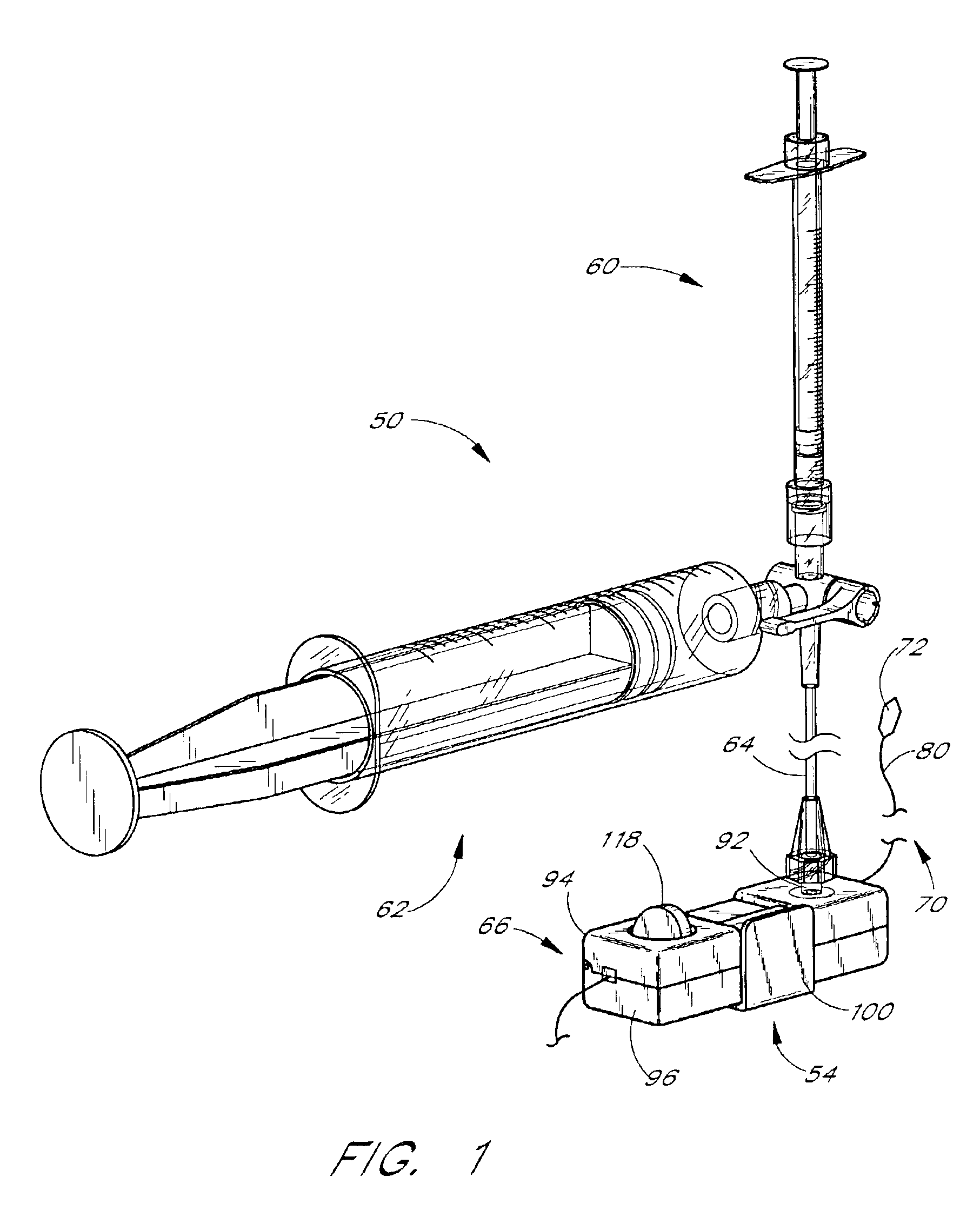Methods for reducing distal embolization
a distal embolization and distal catheter technology, applied in the field of improved methods for reducing distal embolization, can solve the problems of serious and permanent injury, death, and reduced blood carrying capacity of the vessel, and achieve the effect of reducing distal embolization
- Summary
- Abstract
- Description
- Claims
- Application Information
AI Technical Summary
Benefits of technology
Problems solved by technology
Method used
Image
Examples
Embodiment Construction
[0075]The present invention involves a method for advancing a guidewire into position in the vasculature of a patient prior to therapy on plaque, a thrombus, emboli, or other occluding substance. The preferred devices used during the method will be described first, followed by a description of the preferred method of use.
I. Overview of Occlusion System
[0076]The preferred embodiments of the present invention may comprise or be used in conjunction with a syringe assembly such as that generally illustrated in FIG. 1. Also shown in FIG. 1 is an illustrative connection of the syringe assembly 50 to an occlusion balloon guidewire catheter 70 utilizing an inflation adapter 54. The syringe assembly 50, comprising the inflation syringe 60 and a larger capacity or reservoir syringe 62, is attached via tubing 64 to the inflation adapter 54 within which a low profile catheter valve 66 and the balloon catheter 70 are engaged during use.
[0077]The catheter valve 66, described in...
PUM
 Login to View More
Login to View More Abstract
Description
Claims
Application Information
 Login to View More
Login to View More - R&D
- Intellectual Property
- Life Sciences
- Materials
- Tech Scout
- Unparalleled Data Quality
- Higher Quality Content
- 60% Fewer Hallucinations
Browse by: Latest US Patents, China's latest patents, Technical Efficacy Thesaurus, Application Domain, Technology Topic, Popular Technical Reports.
© 2025 PatSnap. All rights reserved.Legal|Privacy policy|Modern Slavery Act Transparency Statement|Sitemap|About US| Contact US: help@patsnap.com



